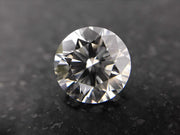Photo: Aether Diamonds
Yahoo Finance
November 3, 2021
Carbon capture and storage (CCS) just got sexier as startups around the world race to turn carbon emissions into luxury and household goods, from diamonds and high-end sports clothing to food containers and plant pots, waste emissions from energy production could become the foundations of the manufacturing industry in the years to come.
With around 50 billion tonnes of CO2 emitted every year, and the latest agreement at the COP26 summit to cut carbon emissions by 30 percent by 2030 from 2020 levels, led by the U.S. and EU and joined by over 100 countries, the use of CCS will become far more widespread over the next decade.
With no sign of oil and gas demand slowing, Big Oil and state governments will have to invest heavily in CCS if they hope to meet these targets. In addition, environmentalists must support CCS as a stopgap on the way to a fully renewable energy transition, with many countries around the world sticking to their ongoing plans to develop their oil and gas industries until alternatives can provide enough reliable energy for their growing populations.
But once these emissions are collected, besides pumping them back into the ground, how can they be used? Several companies are now coming up with innovative solutions to use this waste carbon in the typically carbon-intensive production of several luxury and common products.
An increasing number of tech startups are responding to consumer interest in going green, as Reuters data shows several startups have raised $800 million from investors so far this year to manufacture a variety of products using CO2 emissions, three times the funds raised in 2020.
Aether Diamonds has begun producing diamonds in a lab using carbon dioxide captured through CCS technology, attracting eco-conscious clients looking to invest in a less damaging jewel. During the production of just one one-carat diamond, Aether estimates it removes around 20 metric tonnes of CO2 from the atmosphere, equivalent to the yearly emissions of the average American.
In July this year, luxury sports brand Lululemon partnered with LanzaTech to create yarn and fabric using recycled carbon emissions to use in the brand’s sportswear. LanzaTech has been working with India Glycols Limited and Far Eastern New Century to convert carbon emissions into ethanol that can then be used in polyester production. The synthetic polyester fiber is traditionally made using petroleum-based feedstock, meaning the switch could decrease the clothing industry’s reliance on fossil fuels for fabric production.
Jennifer Holmgren, CEO of LanzaTech stated of the project, “We must radically change how we source, utilize and dispose of carbon. Carbon recycling enables companies like lululemon to continue to move away from virgin fossil resources, bring circularity to their products, and achieve their climate change goals around carbon reduction. We call this being ‘CarbonSmart.’”
Unilever and India Glycols have already enlisted the expertise of LanzaTech to create a new laundry detergent, which uses carbon emissions captured at a steel mill in China in its production process. The use of synthetic biology is being used at an increasing rate in response to the rise of the eco-conscious consumer, the abundance of carbon emissions, and emerging challenges such as rising fuel costs.
Looking at how CCS is being used to support the manufacturing of more everyday goods, CarbonCure Technologies makes technology to inject CO2 into fresh concrete, which it mainly sells to large and small independent concrete manufacturers. Houston-based company Solugen is undertaking a similar project.
Creating a more ecological concrete, a material that has been called the most destructive material on Earth, could attract more customers that would have been put off from the normal carbon-intensive production. As the most widely used substance on the planet, after water, creating innovative ways to make concrete less damaging could drive a huge change at the global level.
Several companies around the globe are already funding exploration into the use of CCS and other technologies to convert carbon emissions into household products such as plastics, soaps, fabrics, perfumes, and many others. This is normally achieved through the engineering of microorganisms that eat industrial emissions, for example, carbon dioxide or carbon monoxide, to produce ethanol, which can be used in the manufacturing of goods.
The Center on Global Energy Policy at Columbia University recently produced a report entitled, Opportunities and Limits of CO2 Recycling in a Circular Carbon Economy, which estimates that fossil fuel products, which could instead use recycled carbon dioxide in their production techniques, account for around 6.8 billion tonnes of carbon emissions. The authors suggest that recycling carbon emissions for other purposes is a significantly better use of carbon than simply pumping it back into the ground.
The recycling of carbon emissions for use in product manufacturing appears to be killing two birds with one stone, as greater investment is being seen in CCS technologies as a means of decarbonizing the energy industry, and major industries require carbon for product production.




